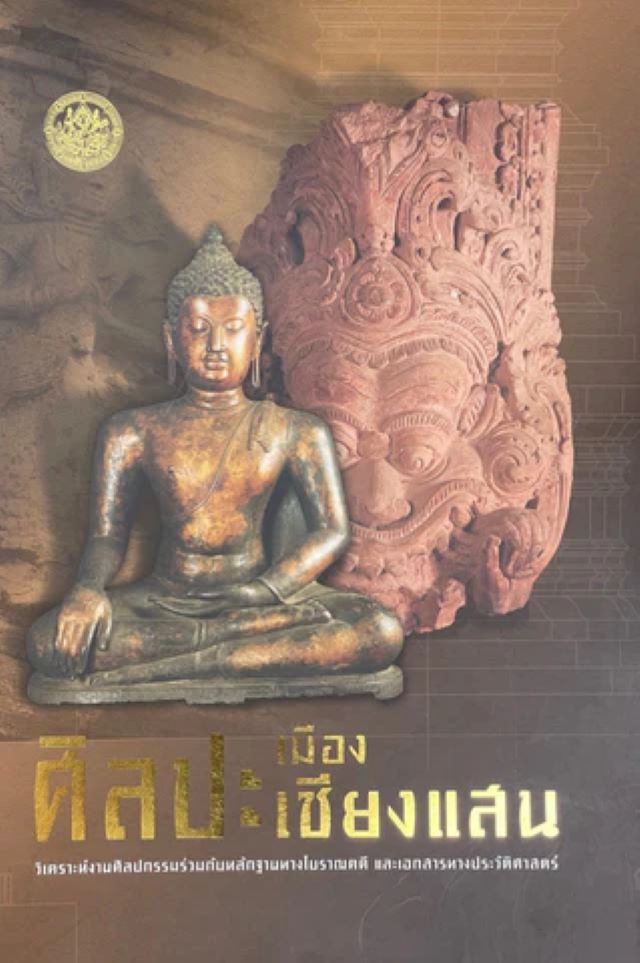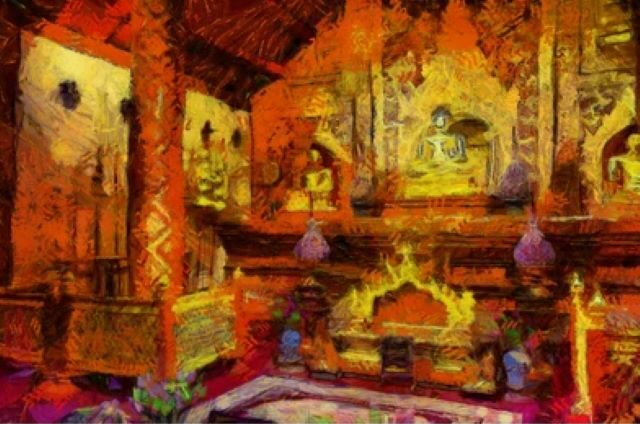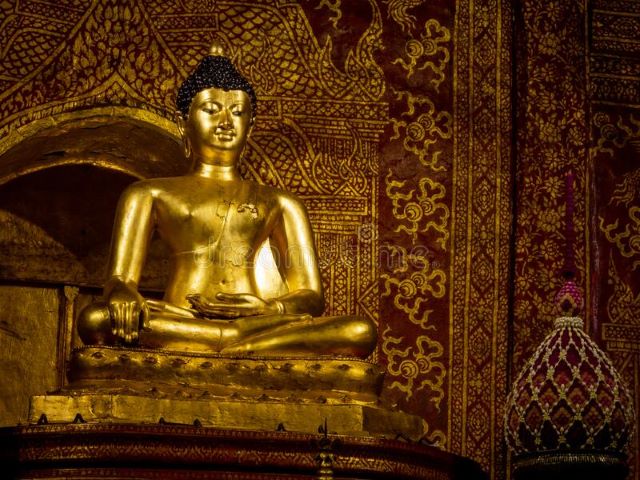Chiang Saen Era Buddhist Art
The Chiang Saen Periodic Buddhist Art style is one of Eight Periodic Styles – The Chiang Saen period is split into three categories;

Run Singh Hneung – Recieved influence from the Bhala of India, the body is plump, and the head and topknot has the shape of a semi-opened lotus flower. The hair of the Buddha does not have strands, rather is rounded like a pile of clams. The face is not elongated, and more rounded. The eyebrows are curved and rounded, outward curved protruding nose, obtuse chin, and bulging chest. The Sangkati robe is shirt and hangs over the breast robes, making a swallow tail shaped contour. The Robe covers almost the whole chest.

Run Singh Sorng – the second period is very similar in compositional elements to the first period, except the Buddha will be less plump. The Sangkati and Civara robe covers less of the torso of the Buddha, reaching only to cover the navel and stomach, but not the chest. The head and topknot is slightly rounder more like a closed lotus.

Run Singh Sarm – the third period changes much more from the original style, resembling much more the Sukhothai Periodic influence. The hairs of the head are more flamed and higher, much more detailed and see the hairlines between the hair and the forehead as fine lines. If a Bucha statue, then the lotus throne will be mostly double or at least with double interspersed petals (2 layered) and with outward curving lines on the lotus throne (protruding outwards away from the statue).
Chiang Saen Ancient Thai Buddhist Periodic Art and amulets are of immense Historic and Religious value, as well as Artistically being one of Thailands great Cultural Inheritances. The Chiang Saen era, which lasted from the 10th to the 13th centuries, was a golden age for Thai Buddhist art. This era saw the flourishing of Buddhism in Thailand, and with it the development of a unique and vibrant style of Buddhist art that was heavily influenced by the artistic traditions of India, Sri Lanka, and Cambodia.
One of the most prominent features of Chiang Saen art is its use of bold, flowing lines and fluid forms. This style is evident in the many Buddhist sculptures and statues that were produced during this era, which often depict the Buddha in a serene and peaceful pose, surrounded by an aura of calm and tranquility. The intricate carvings and intricate designs that are characteristic of Chiang Saen art serve to further enhance the serene and contemplative atmosphere of these works, reflecting the Buddhist belief in the importance of mindfulness and introspection.

Another key feature of Chiang Saen art is its use of rich, vivid colors. These colors were often achieved through the use of pigments made from natural materials such as minerals, plants, and insects. This use of vibrant color is particularly evident in the many murals that were painted on the walls of Buddhist temples during this era, which often depict scenes from the life of the Buddha and other Buddhist legends.

In addition to sculptures and paintings, the Chiang Saen era also saw the creation of a variety of other works of Buddhist art, including bronze castings, wooden carvings, and architectural embellishments. These works are notable not just for their artistic beauty, but also for their religious significance. For example, many Buddhist temples built during this era feature elaborate gilded stupas, which symbolize the Buddha’s teachings and serve as a reminder of the path to enlightenment. One of the most important sites for the study of Chiang Saen art is the famous Wat Phra Kaew temple in Chiang Saen, which houses some of the best-preserved examples of this style of Buddhist art. The temple’s many sculptures, paintings, and architectural embellishments are considered masterpieces of Thai Buddhist art, and are revered by scholars and worshippers alike.

Despite its importance, the Chiang Saen era was relatively short-lived, and many of its artistic treasures were lost or destroyed over time. Nevertheless, the legacy of Chiang Saen art continues to be felt in Thailand to this day, and its influence can be seen in the many works of Buddhist art produced in the centuries since.
In conclusion, the Chiang Saen era was a seminal moment in Thai Buddhist art, and its works are considered to be among the most beautiful and significant of all Thai art. Whether viewed as religious artifacts or simply as works of art, these works continue to inspire awe and admiration, and serve as a testament to the skill and creativity of the Thai people.